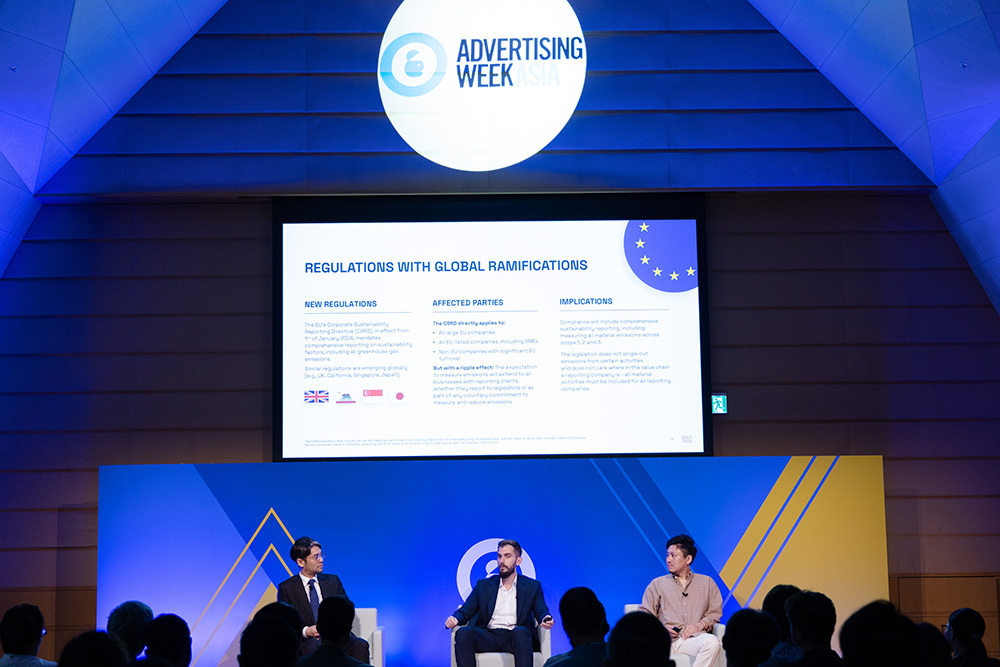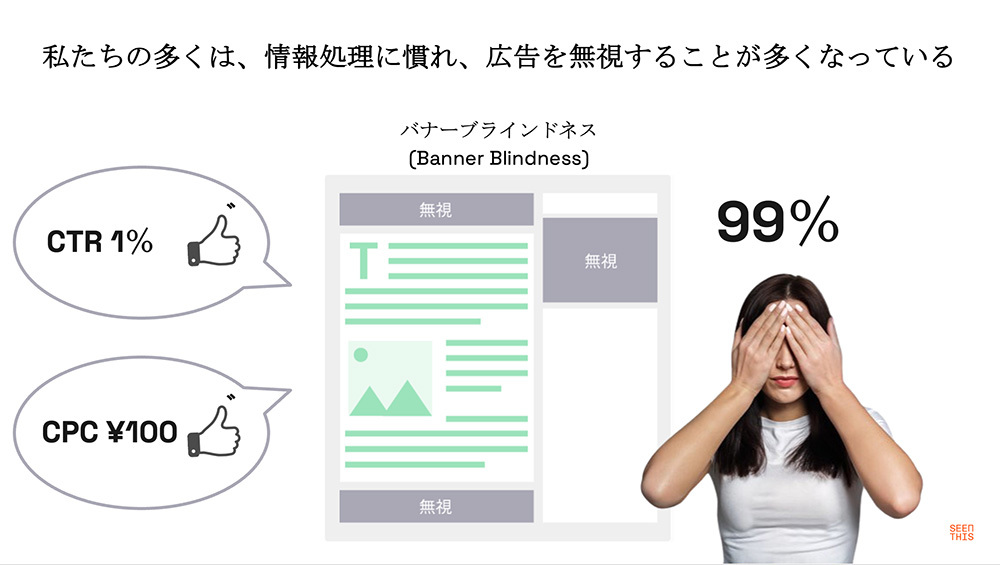Sustainability hasn't been a direct focus in the marketing or IT industries until now. Yet, every time we search the internet, energy is consumed and CO₂ is emitted. As interest in the SDGs grows, an era is approaching where CO₂ emissions from corporate marketing activities will also be scrutinized.
Anticipating this future, the Advertising Week Asia 2024 session featured Tom Jones-Barlow from Swedish tech company SeenThis and Nobuyuki Onodera from Dentsu Digital Inc. Here's a report on the session.
Akimoto: I'm Akimoto from Stylus Japan. We are an advisory firm supporting corporate future strategies, new business ventures, and other management strategies. I will be moderating this session.
Tom: I'm Tom, Vice President of SeenThis APAC (Asia-Pacific). I'm looking forward to sharing examples from both domestic and international markets today.
Onodera: I'm Nobuyuki Onodera from Dentsu Digital Inc. This January, Dentsu Digital Inc. established the " Dentsu Digital Global Center" (DDGC), a Center of Excellence (CoE) organization leading global business. I currently serve as a manager within that organization. I am also a Connect Member of the Dentsu Innovation Initiative. Thank you for having me today.
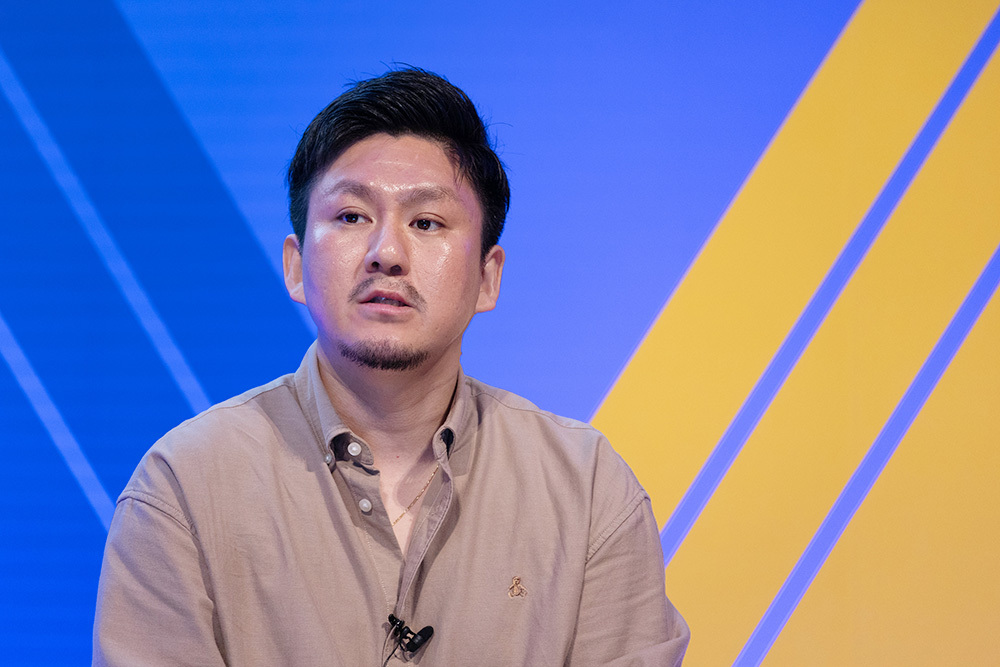
Mr. Onodera, who promotes global business at Dentsu Digital Inc. while also advancing the development of global platforms as a DII Connect Member within Dentsu Innovation Initiative (DII)
Green Tech in the Spotlight: Five Keywords
Akimoto: First, let me briefly introduce the latest trends in sustainability. Recently, "environmental awareness" has become a very important theme in the fields of marketing and advertising.
However, it can be difficult to understand if you look at it in isolation, so I will first talk about "environmental trends" from a macro perspective. Currently, many companies around the world are paying attention to "green tech," which refers to environmentally conscious technologies and services. I will introduce five trends.

Akimoto: The first is "mobility." In Japan, we've seen the emergence of bike sharing and electric kickboards like LUUP, and this trend of reducing CO₂ emissions and environmental impact is becoming a global movement.
The second is "reducing air pollution (clean air)". In fact, only about one-third of countries provide clean air that meets WHO standards. In developed countries, densely populated cities are invariably experiencing worsening air pollution. Data shows that in cities like New York and Chicago, the number of days with observed air pollution in June and July 2023 was the highest in the past 23 years, highlighting how this issue has accelerated in recent years.
The third theme is "Natural Environment x Technology." Recent advances in AI and communications technology have made it possible to monitor the Earth's surface from satellites and detect areas experiencing water shortages using image recognition technology. The question is how to utilize image recognition and image analysis AI technologies, which have not been directly applied to the environment until now, for environmental conservation. The use of technology has also become a topic of discussion in environmental issues in recent years.
The fourth theme is "Green Housing (Sustainable Housing)." I believe this will become an increasingly relevant topic in Japan as well. For example, utilizing solar power generation and other methods to circulate the energy generated within the home. When people gather in the living room and it gets warm, the excess heat can be converted into energy and used in other ways. Discussions on utilizing such technologies have been growing recently.
This is also linked to the value of affordability. Recently, electricity and water bills have been rising in Japan, increasing the cost of living. The rate of increase is particularly high in Europe and the United States, where it has become a major issue. Therefore, the goal is a world of zero bills. Efforts to achieve this and market demand are growing significantly.

And the fifth is "Sustainable Digital Systems." From here, I'd like to connect to today's theme: "Environmental Consideration" within marketing, IT, and the advertising industry.
The catalyst for environmental awareness in the digital realm was Google's presentation at a conference in London about a year ago. There, Google stated, "The IT industry cannot ignore the environment." Incidentally, each Google search emits approximately 0.2 grams of CO₂. This results in about 180,000 kg of CO₂ emitted daily.
The year 2025 is significant because it was the target year for many companies to achieve interim goals set around 2018, when environmental issues gained global attention. While various targets existed, such as reducing plastic use, it is widely anticipated that many companies will likely fail to meet these goals.
Digital advertising emits massive amounts of CO₂
Akimoto: In this context, I believe companies will increasingly be held accountable. This accountability won't just apply to manufacturers; I anticipate an era where transparency will be demanded even from companies like marketing and IT firms, which weren't previously expected to directly contribute to environmental solutions.
In other words, the trend toward "sustainable digital systems" will impact the advertising and marketing industries. Personally, I see this becoming a major movement, akin to Europe's GDPR (General Data Protection Regulation). Tom, could you elaborate on that point?

Tom, Vice President of SeenThis APAC
Tom: The internet is actually a major contributor to environmental pollution, emitting roughly twice the greenhouse gases of the aviation industry, which is often criticized for its CO₂ emissions.
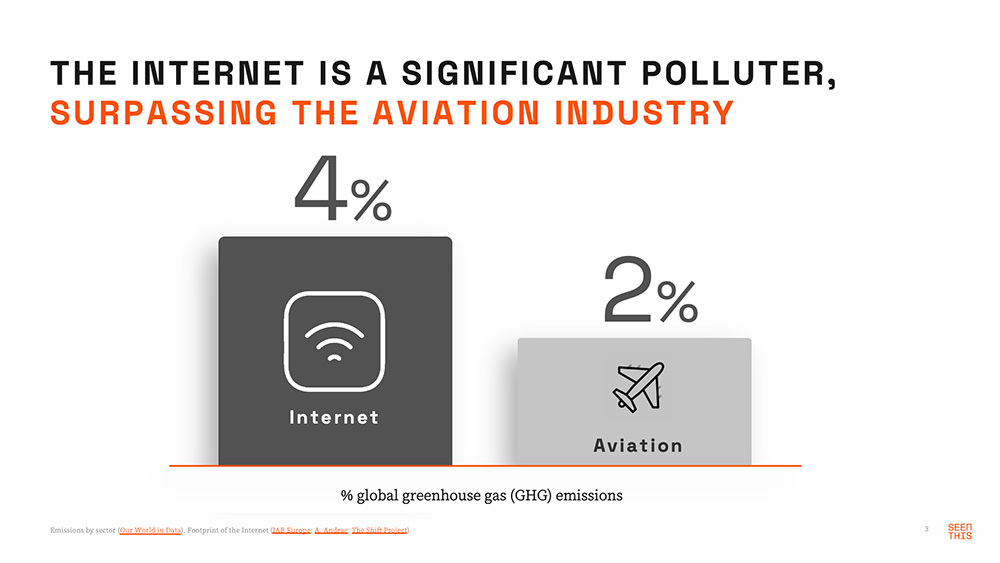
Tom: You might think digital advertising isn't that bad for the environment. But in reality, it consumes an enormous amount of energy. Global CO₂ emissions from digital advertising reach 60 million tons annually, equivalent to approximately 20 million flights between Tokyo and New York.
Awareness of the environmental impact is definitely growing within the internet industry. Industry groups have been established to discuss how emissions should be reported and standardized. For example, AD NET ZERO (an advertising industry coalition aiming for net-zero carbon emissions) is a global industry group pursuing carbon neutrality for the sector through various methods.
Governments worldwide are beginning to introduce regulations requiring companies to report emissions. For instance, in Singapore, all companies listed on the Singapore Exchange must report their emissions by the end of 2025. The EU requires companies within the EU to report emissions from their overseas operations, meaning reporting must include emissions from outside the EU, such as in China, the US, and Japan.
When the EU implemented GDPR, many companies in Asia and the US were not yet prepared. However, just as many governments aligned with the EU at that time, it is expected that numerous governments will introduce similar regulations going forward. Furthermore, regulations are anticipated to expand beyond mere reporting to include reporting on how emissions are being reduced.
This may seem like a huge challenge. However, the technology to reduce data volume and CO₂ emissions exists and is already being implemented in Japan. For example, Spotify Japan utilized SeenThis's technology this past August, reducing data transfer volume by 74% and CO₂ emissions by 51%. This is equivalent to eliminating 24 flights between Tokyo and Shanghai.

SeenThis: Supporting the Global Digital Ecosystem
Akimoto: SeenThis developed "SeenThis," a next-generation video ad delivery service that applies adaptive streaming technology to digital advertising. This achieves both performance and sustainability. Tom, please explain this technology.
Tom: "SeenThis" applies the same adaptive streaming technology used by Netflix and Spotify to digital advertising. Current digital ads all require downloading, resulting in massive data transfer before they appear to users. Streaming delivery, however, enables instant delivery of high-quality video to display inventory, comparable to TV commercials. This allows ad campaigns to run 50-80% cheaper than traditional downloaded video ads delivered to video inventory. There's also no upper limit on video size.
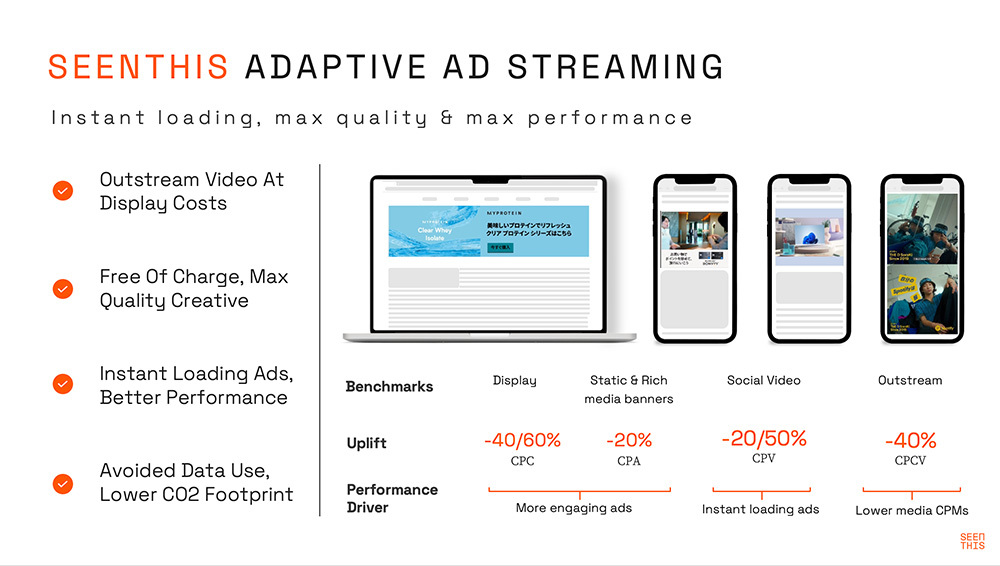
Tom: It's no exaggeration to say "SeenThis" was developed by Nissan. Seven years ago, Nissan Sweden approached us asking, "Can we use 'SeenThis' to deliver video to display ad slots?" Since then, "SeenThis" has been used in every Nissan campaign. In this campaign, CPA (Cost Per Action) decreased by 20% while viewing time increased by 49%.
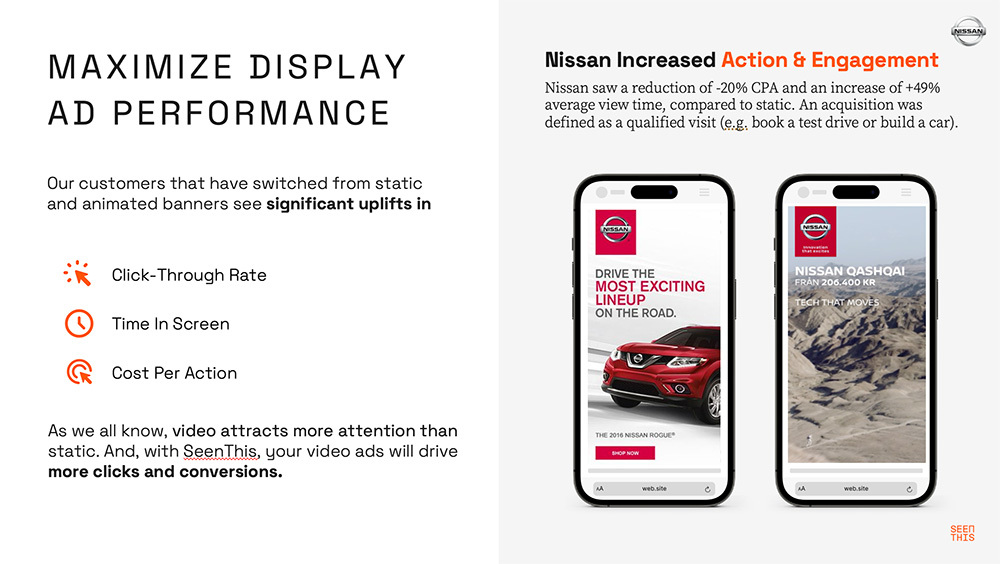
Tom: For the Heineken brand beer "Tiger," CTR (Click-Through Rate) increased by nearly 300%, while CPC (Cost Per Click) decreased by nearly 70%.

Tom: For the Swedish fintech company Klarna, the Cost Per Completed View (CPCV) decreased by 50%.
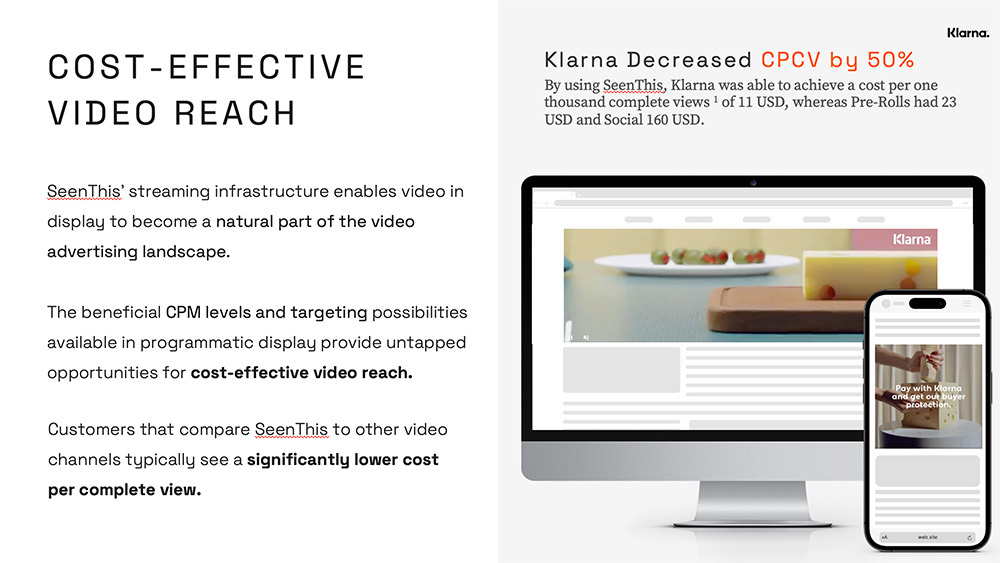
Tom: Other brand metrics also showed positive results. Lumen's attention measurement survey revealed a 1.7-second increase in attention duration, while viewability rose from 66% to 78%.
Digital advertising that balances sustainability and performance
Akimoto: Next, Mr. Onodera will share insights on market trends within Japan.
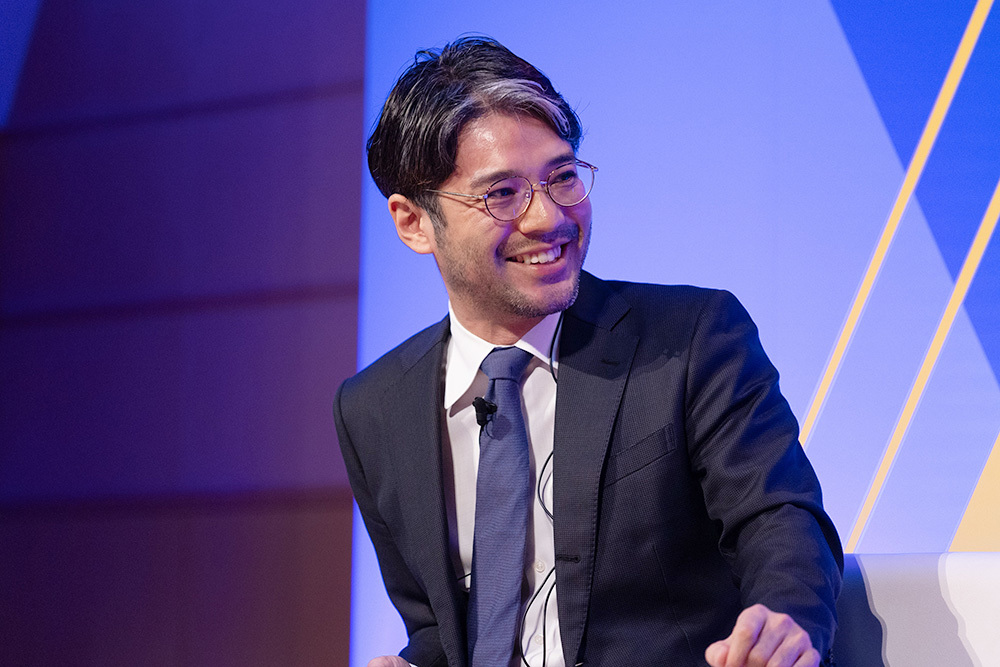
Mr. Akimoto of Stylus Japan, who moderated this session
Onodera: Yes. According to a certain newspaper-affiliated media outlet, the Japanese government is considering introducing penalties (imposing levies) on major corporations that fail to meet greenhouse gas reduction targets. Reducing CO₂ emissions is now a top national priority, and we believe it is an urgent issue requiring more concrete and robust initiatives.
Within the Dentsu Group, the use of "SeenThis" is indeed increasing. Following the recent "Cannes Lions 2024," a growing movement is emerging among major global media agencies to accelerate sustainability initiatives and promote carbon offsetting across the entire advertising industry.
Dentsu Group also intends to actively engage with this trend. To do so, visualizing the impact is crucial. For example, by measuring the CO₂ emissions reduced through digital ad delivery and quantifying and visualizing the contribution to decarbonization, we can provide advertisers with new added value.
Another approach is simply utilizing adaptive streaming technology, which adjusts ad display quality based on the user's network environment. Spotify employs similar technology to instantly deliver music content, enhancing the user experience. Applying this technology to ad delivery enables a smooth viewing environment where ads are not a source of stress.
Users often feel annoyed by ad formats, messaging, and targeting. In recent years, media UIs have become visually cluttered, overflowing with ad slots. This creates a vicious cycle where users abandon not only the ads but the media itself. In today's information-saturated internet environment, technologies that enhance user experience and sophisticated planning are essential. Modern people constantly have smartphones in hand, encountering ads in every daily situation like trains and elevators. Yet, as the term "banner blindness" suggests, we've grown accustomed to ignoring digital ads.
Onodera: On the other hand, advertising agency planners are often required to guarantee and pursue efficiency, with goals like boosting CTR to 1%+. However, this intense focus on that 1% frequently leads to the remaining 99% being overlooked.
Looking ahead, considering issues like cookie-less environments and MFA (Made-For-Advertising: websites designed solely to generate digital ad revenue), I believe we're entering an era where "essential value" – such as the contribution of more potential marketing activities and advertising (assist effects) – will be valued more than ever. To achieve this, providing users with a comfortable ad experience through "video ads" that align with the content's context is key.
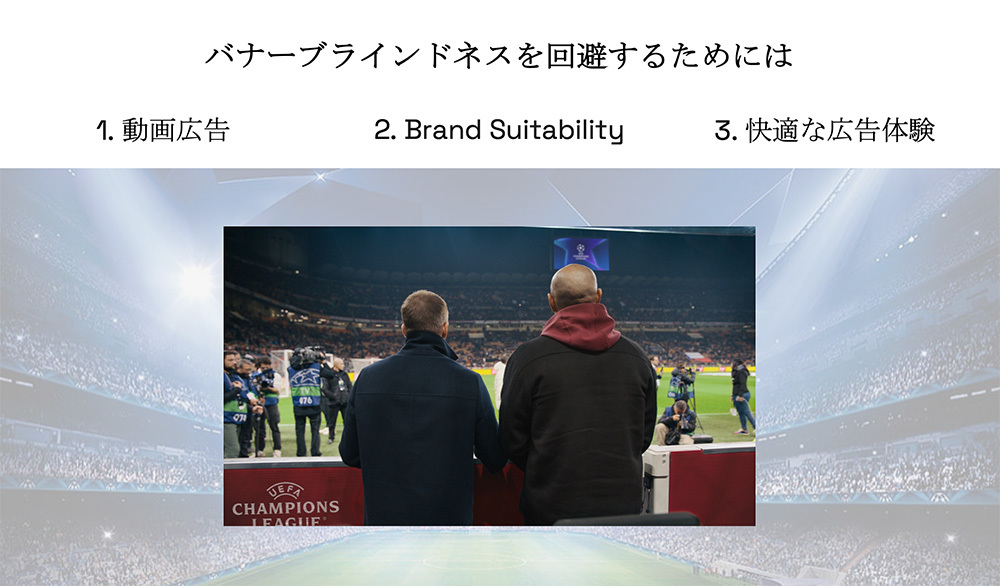
Onodera: The Lay's potato chip ad, featured at Cannes and integrated with soccer content, perfectly embodies this ideal. The video stars David Beckham and Thierry Henry as Key Opinion Leaders (KOLs), unfolding a story that engages stadium spectators.
While an advertisement, it feels seamless and enjoyable as branded content that unites with the audience. This approach builds a worldview that enhances brand loyalty, and we feel now is the time to rethink what internet advertising should be.
Japan also begins utilizing "SeenThis"
Onodera: As one example, let me share our collaboration with the automaker "MINI Japan." We've implemented various initiatives with them tailored to different objectives, such as branding and lead generation, each with its own set of KPIs. Naturally, we also run ads on major platforms.
This time, using "SeenThis" to deliver rich video ads resulted in improved CTR compared to GDN (Google's ad delivery service) and Meta display ads. Furthermore, compared to YouTube video ads, we achieved a higher VCR (Video Completion Rate) and lower CPCV.
Furthermore, environmentally, we reduced CO₂ emissions by 62%. In just a two-week delivery period, we cut CO₂ equivalent to "two flights between Tokyo and Shanghai." We plan to continue collaborating with this company to further expand environmentally conscious marketing activities.
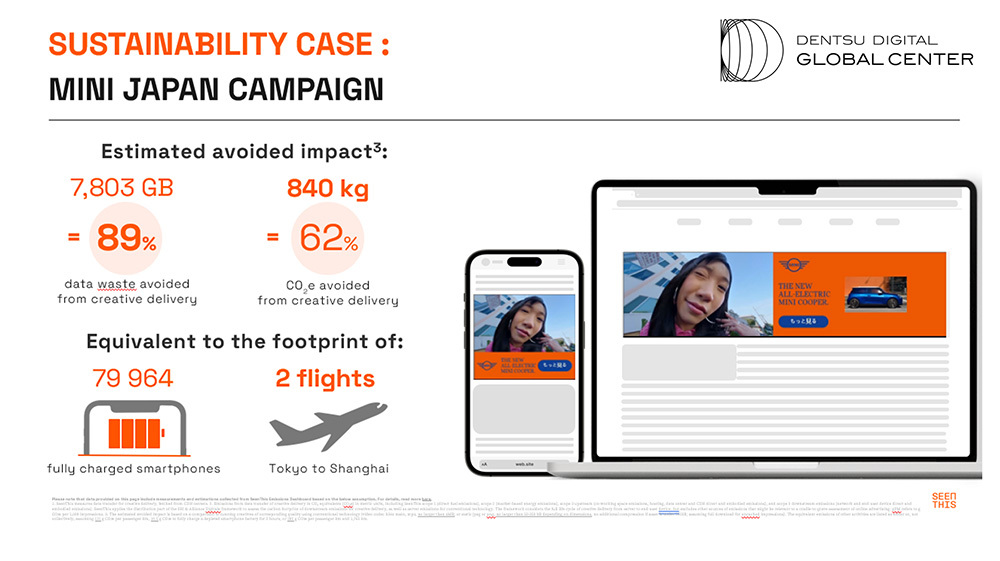
Akimoto: Thank you. Next, Tom, please tell us specifically how you are developing your business in Japan.
Tom: We already have several distribution cases within Japan. Many global brands, including Google, Meta, Nike, Accenture, and Loewe (LVMH), are utilizing "SeenThis" to distribute ads in Japan. SeenThis views Japan as a key area. We have also established SeenThis Japan as our base in the country. We look forward to working with more people in the future.
Akimoto: That concludes today's session. Thank you all for participating.




